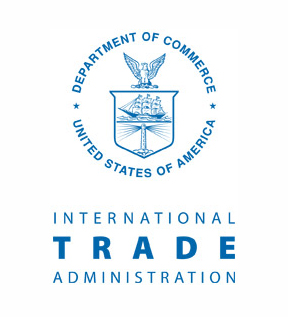July 27, 2016 – The U.S. Department of Commerce today announced that the United States welcomed 5.5 million international visitors(1)(2) in January 2016, 29,000 more than in January 2015 and a one percent increase in visitors. January 2016 marked the 5th consecutive month of growth in total U.S. visits.
HIGHLIGHTS(2)(3)
Top Inbound International Markets
- The top inbound markets continued to be Canada and Mexico. Mexico recorded 1.5 million visits to the United States in January 2016, an increase of three percent. At the same time, overnight volume from Canada totaled 1.4 million visitors, a 13 percent decline (-13%) compared to January 2015. The People's Republic of China (excluding Hong Kong) (+35%), Japan (+3%), and the United Kingdom (+12%) rounded out the top five inbound markets.
- In January 2016 eight of the top 10 countries posted increases in non-resident visits. Non-resident visitation from five of the top 10 countries registered double-digit increases.
Top 10 Countries
Country of Residence
Percent Change January 2016 vs. 2015
Mexico
3%
Canada
-13%
People’s Republic of China (excluding HK)
35%
Japan
3%
United Kingdom
12%
Brazil
-22%
South Korea
13%
Australia
10%
Germany
5%
India
17%
Regional Markets
- Eight of the nine(4) major overseas regional markets recorded increases in non-resident visits to the United States during January 2016: Asia (+16%), Western Europe (+7%), Oceania (+9%), the Middle East (+3%), Central America (+23%), the Caribbean (+9%), Eastern Europe (+5%), and Africa (+8%).
Non-Resident Visits from Overseas(5) Countries
- January 2016 non-resident visits from overseas countries (2.6 million) were up eight percent over January 2015.
- January 2016 travel from overseas markets accounted for 48 percent of total arrivals to the United States.
Top Ports: January 2016
- January 2016 visitation through the top 15 ports of entry accounted for 86.4 percent of all overseas visits compared to 86.5 percent in January 2015.
- The top three ports (Miami, New York [JFK], and Los Angeles) accounted for 41.0 percent of all overseas arrivals compared to 41.6 percent in January 2015.
- Eleven of the top 15 ports recorded increases in arrivals in January 2016. Seven of these ports recorded double-digit increases.
Pleasure Travel vs. Business Travel: January 2016
- In January 2016, of the top 20 overseas countries with visits to the United States, more than 90 percent of the visits recorded from Argentina (93%) and Costa Rica (90%) represented pleasure travel to the United States. On the contrary, 30 percent or more of the visits recorded from the United Kingdom (31%), Germany (39%), France (35%) and the Netherlands (42%) represented business travel to the United States.
- In January 2016, of all overseas non-resident visits to the United States, 68.2 percent represented pleasure travel and 18.2 percent represented business travel.
Access to National Travel and Tourism Office Monthly Arrivals Data
To access international travel and tourism statistics from the U.S. Travel and Tourism Statistical System, visit the National Travel and Tourism Office I-94 monthly arrivals page at http://travel.trade.gov/view/m-2016-I-001/index.asp.
(P) = January 2016 monthly I-94 arrivals data are preliminary with these data subject to revision. (1)U.S. visitation data integrates the volume of inbound international visitors to the United States from residents of other countries using three U.S. and international government sources: the U.S. Department of Homeland Security/U.S. Customs and Border Protection I-94 Arrivals Program, Statistics Canada's International Travel Survey, and Banco de Mexico travel data. (2) I-94 monthly arrivals data are released as preliminary, with these data subject to revisions that may be possible with improved solutions and/or sources discovered during the reported calendar year. (3)Percent changes posted for international visits to the United States were calculated by comparing January 2016 data to January 2015 data. (4)The nine major overseas regions are: Western Europe, Eastern Europe, Asia, the Middle East, Africa, Oceania, South America, Central America and the Caribbean. (5)Overseas includes all countries except Canada and Mexico.


